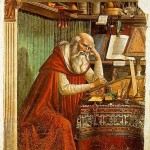 This conference applies Walter Benjamin’s famous concept of aura, namely the unique existence of the work of art at the place where it happens to be, to different instances of early modern writing. The notion of aura has been influential in art history. It made scholars reflect on, for example, the interaction of a painting or a sculpture and the place where it was/is exhibited, or on the differences between original works of art and copies. It has received far less attention in the study of literature and other instances of writing, however, especially those produced after the onset of print. While medievalists still pay attention to the individual manuscript in which a text came down to us, early modern studies tends to treat text as something abstract and intangible that can be transferred from one context or material support to another without change of meaning. Scholarship on the impact of print during the early modern period has focused almost exclusively on the ways in which print affected the dissemination of abstract knowledge and ideas rather than the material manifestation of texts.
This conference applies Walter Benjamin’s famous concept of aura, namely the unique existence of the work of art at the place where it happens to be, to different instances of early modern writing. The notion of aura has been influential in art history. It made scholars reflect on, for example, the interaction of a painting or a sculpture and the place where it was/is exhibited, or on the differences between original works of art and copies. It has received far less attention in the study of literature and other instances of writing, however, especially those produced after the onset of print. While medievalists still pay attention to the individual manuscript in which a text came down to us, early modern studies tends to treat text as something abstract and intangible that can be transferred from one context or material support to another without change of meaning. Scholarship on the impact of print during the early modern period has focused almost exclusively on the ways in which print affected the dissemination of abstract knowledge and ideas rather than the material manifestation of texts.
There are, however, numerous indications that, during the early modern period, the place where a text happened to be, as well as the object it was written or printed on, could affect the meaning and function of that text. Pre-modern forms of writing, such as, for example, the illuminated manuscript, inscriptions on objects and buildings and the veneration and burning of books or pieces of paper containing religious writings continued to be important after the invention of the printing press. The early modern period also saw the appearance of new auratic practices like the veneration of the artist’s signature and the Reformation text altarpiece. All of these examples make us wonder if the visible word might not have been perceived as more than a purely functionalist medium in the early modern period.
The aim of this conference is to ascertain if, how and to what degree movable type influenced the early modern significance of the aura and appearance of the word. This will be done through a series of papers that reflect on how texts could gain or bestow meaning through their relationship to their material support and physical contexts or in the process of the act of writing itself. What was the significance of the unique existence of writing at the place where it happened to be? And what about the moment when, the way in which and the person by whom it was created ? Did writing lose its aura when mechanically reproduced, as Benjamin believed to have been the case for images? Was it altered, or, as the German art historian Horst Bredekamp has argued for devotional images, unaffected by it ?
The question of the aura of early modern text relates at the same time to the content, the material manifestation and the social and cultural contingency of language. Its relevance also transcends narrow temporal and national boundaries. The Aura of the Word in the Early Age of Print therefore has a deliberately broad interdisciplinary and international approach. Speakers come from a variety of fields (literary history, art history, cultural history, architectural history) and of scholarly traditions (notably European and North American). Their papers will explore different instances of writing (in print and manuscript, in books, on scraps of paper, on paintings, liturgical objects and in buildings) from a wide geographical area (The Low Countries, France, Germany, the Italian Peninsula, New Spain), in a variety of languages (French, Dutch, Hebrew, German and Spanish) and from a broad temporal framework (1450-1600). Since the theme of the conference relates to the materiality of text, the programme also features a visit to the print collections of the Royal Library.
Informations complémentaires : http://www.auraoftheword.ugent.be/node/7

Leave a Reply
You must be logged in to post a comment.